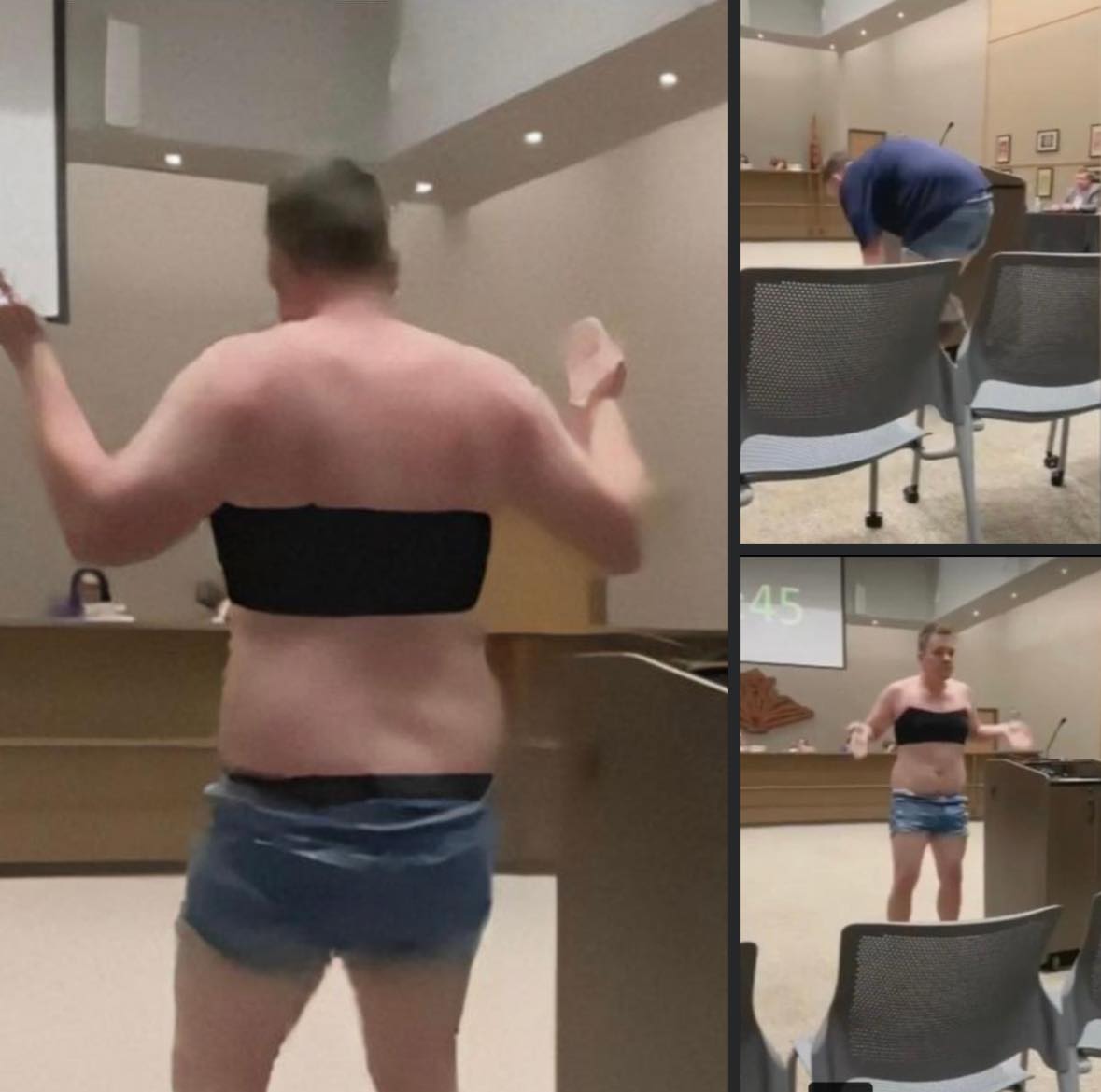Parents often feel deeply invested in school policies, especially when new rules might directly impact their children. This was the case for an Arizona father who took a bold and unconventional approach to express his disagreement with proposed dress code changes in his local school district. Determined to make his voice heard, he turned a routine school board meeting into an unforgettable demonstration.

In Gilbert, Arizona, Ira Latham, a father of four students in the Higley Unified School District, attended a school board meeting dressed formally. However, his appearance quickly took an unexpected turn. Standing at the podium, he began addressing the board, then stripped off his outer clothing to reveal a crop top and short shorts. He argued that this outfit would be permissible under the district’s proposed dress code revisions. “This would be suitable in a classroom under the new policy,” Latham stated, highlighting his concerns about the implications of the relaxed guidelines.
The proposed changes had been under discussion since May and marked a significant shift from the stricter dress code established in 2001. The new policy focused on covering private areas and undergarments while allowing visible waistbands and straps, as long as undergarments weren’t worn as primary clothing. This more lenient approach stood in contrast to the previous rules, which prohibited exposing the chest, stomach, and midriff.
Latham strongly opposed the updated dress code, expressing concerns about its potential to disrupt the learning environment. “As a parent, I want the district to create policies that help my kids concentrate in class and foster a safe environment while minimizing unnecessary distractions during lessons,” he said. He also argued that the vagueness of the new policy placed an unfair burden on teachers, requiring them to interpret and enforce ambiguous guidelines.
To emphasize his disapproval, Latham used his outfit as a visual example. “Since I couldn’t think of any other way to express my concerns, I decided to show you an example,” he explained. Removing his formal attire, he stood before the board in his provocative outfit and declared, “In my opinion, this is not appropriate for a board meeting. Just because the dress code allows it in a classroom doesn’t mean it creates a safe space for students.”
The demonstration sparked mixed reactions among the school board members. Board President Tiffany Schulz expressed frustration with Latham’s approach, arguing that the previous dress code unfairly targeted female students. Schulz supported the new guidelines, emphasizing the importance of fairness and suggesting that teachers should focus on educating rather than policing students’ clothing choices. “It’s not appropriate to tell people to dress a certain way just to avoid making others uncomfortable,” Schulz stated, adding that such scrutiny often made female students feel self-conscious.
In contrast, board member Anna Van Hoek aligned more closely with Latham’s concerns. She argued that a straightforward, modest dress code instills values like self-respect and prepares students for professional environments. “If we want our kids to be ready for college and careers, they need to learn self-respect, and that includes dressing in a way that doesn’t unnecessarily showcase their bodies,” Van Hoek explained.
Despite Latham’s passionate protest, the school board narrowly approved the updated dress code in a 3-2 vote. The Higley Unified School District adopted the new policy, even as some parents and educators raised concerns about its impact on classroom focus and decorum.
The debate in Gilbert reflects a broader national conversation about school dress codes. While some districts are moving toward more lenient policies, others are opting for stricter guidelines. For instance, districts in Mississippi, including Madison, Rankin, and Hinds counties, have entirely banned crop tops, requiring shirts to fully cover students’ stomachs. They also prohibit pants with holes and enforce specific length requirements for skirts, showcasing a contrasting approach to dress code enforcement.
Reflecting on the broader implications of the new policy, Latham criticized the Higley guidelines as overly permissive. “The dress code they’ve implemented is more like a public pool rule than an educational policy,” he told reporters. “It essentially boils down to making sure kids cover their underwear, and that’s about it.”
Supporters of the updated dress code, like Schulz, countered that modernizing these rules fosters inclusivity and reduces stigma around clothing choices. Schulz argued that students should have the freedom to express themselves without fear of judgment. “These are just kids,” echoed another board member, Amanda Wade. “While school might be the closest thing to a job for them right now, they still deserve some freedom to explore and express themselves.”
The controversy in Gilbert highlights the challenges schools face in balancing diverse viewpoints. For parents like Latham, a stricter dress code represents structure and focus, values he believes are essential to education. For others, like Schulz and Wade, modernizing dress codes signals a commitment to equity and individuality.
Ultimately, the debate extends beyond clothing, touching on identity, respect, and preparation for the future. While Higley Unified School District has settled on its new policy, the discussion is far from over. Across the country, schools continue to wrestle with finding dress code policies that address the concerns of parents, educators, and students alike while fostering an environment conducive to learning.





